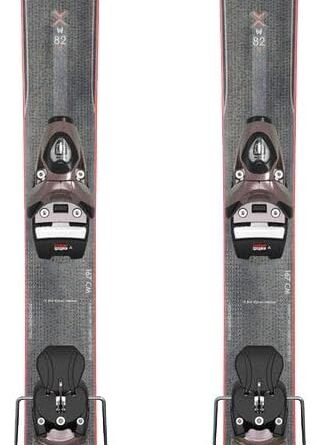
So you’ve got yourself a windsurfing board bag, but do you know how to take care of it? In this ultimate guide, we will walk you through the essential steps to ensure that your board bag stays in top-notch condition for all your windsurfing adventures. From cleaning and drying to proper storage techniques, you’ll learn everything you need to know to keep your windsurfing board bag in perfect shape and ready for your next thrilling ride on the waves.
The Ultimate Guide to Proper Care and Storage of Your Windsurfing Board Bag

This image is property of images.pexels.com.
Choosing the Right Windsurfing Board Bag
When it comes to caring for and storing your windsurfing board, one of the most important considerations is choosing the right board bag. The right bag will not only protect your board during transportation and storage but also make it easier for you to carry your gear to and from the beach.
Consider the Size and Type of Board
Before purchasing a board bag, you must consider the size and type of your windsurfing board. Board bags come in various sizes, so it’s essential to choose one that can accommodate the length and width of your specific board. Additionally, consider whether you have a wave board, a freestyle board, or a slalom board, as different boards have different shapes and dimensions.
Check the Material and Construction
Another important factor to consider when choosing a board bag is the material and construction. Look for bags made from durable and water-resistant materials such as nylon or polyester. Ensure that the bag has reinforced stitching and a strong zipper for added durability. A well-constructed board bag will provide long-lasting protection for your windsurfing board.
Evaluate the Padding and Protection Features
When it comes to keeping your windsurfing board safe and secure, the padding and protection features of the board bag are crucial. Look for bags with thick padding on the top and bottom to protect your board from impacts and scratches. Additionally, consider whether the bag has extra padding on the straps and handles for added comfort during transportation.
Look for Convenient and Functional Design
Lastly, consider the design and functionality of the board bag. Look for features such as multiple carrying handles, detachable shoulder straps, and wheels for easy transportation. Some bags even have separate compartments for storing fins, mast, or other accessories. Choose a bag that suits your needs and makes it convenient for you to transport and store your windsurfing board.
Cleaning and Maintenance Tips
Properly cleaning and maintaining your windsurfing board bag is essential for prolonging its lifespan and ensuring the best possible protection for your board.
Rinse Off Saltwater and Sand
After a day of windsurfing, it’s important to rinse off any saltwater and sand from your board bag. Saltwater can be corrosive, and sand can cause abrasions or damage the bag’s interior. Use fresh water to thoroughly rinse off any residue, both inside and outside the bag. Pay special attention to the zipper area and any other openings where saltwater and sand can easily accumulate.
Use a Mild Soap Solution for Thorough Cleaning
For thorough cleaning, use a mild soap solution. Fill a bucket with warm water and add a small amount of mild soap. Gently scrub the bag’s interior and exterior with a soft brush or sponge, focusing on any dirty or stained areas. Rinse off the soap thoroughly with clean water to ensure no residue remains. Avoid using harsh chemicals or abrasive cleaners, as they can damage the bag’s material.
Inspect and Repair any Damages
Regularly inspect your board bag for any damages such as rips, tears, or loose stitching. If you notice any issues, it’s important to address them promptly to prevent further damage. Small tears or loose stitches can often be repaired using a heavy-duty nylon thread and a needle. However, for major damages or if you’re unsure how to repair the bag yourself, it’s best to seek professional repair services.
Ensure Proper Drying before Storage
Before storing your board bag, it’s crucial to ensure that it is completely dry. Even a small amount of moisture can lead to mold or mildew growth, which can damage both the bag and your windsurfing board. After cleaning, hang the bag in a well-ventilated area or use a fan to speed up the drying process. Make sure all compartments are dry before storing any equipment or accessories inside the bag.
Proper Storage Techniques
Properly storing your windsurfing board bag is vital to maintain its shape and protect it from damage while not in use.
Keep the Bag in a Cool and Dry Location
Store your board bag in a cool and dry location, away from direct sunlight and extreme temperatures. Heat can cause the bag’s material to degrade over time, while excessive moisture or humidity can encourage mold or mildew growth. Choose a storage area that has a consistent temperature and humidity level to ensure the longevity of your bag.
Avoid Direct Sunlight and Extreme Temperatures
Direct sunlight can cause the color of your board bag to fade and weaken the bag’s material. Additionally, extreme temperatures can warp the bag or cause it to become brittle. Avoid storing the bag in areas exposed to direct sunlight or extreme temperature fluctuations, such as a car trunk, attic, or garage that lacks climate control.
Store the Bag in an Upright Position
When storing your board bag, it’s best to keep it in an upright position. This helps maintain the bag’s shape and prevents any unnecessary pressure or distortion on your board. If your bag has multiple compartments, make sure to properly distribute the weight of the equipment inside to prevent any imbalance.
Avoid Stacking Heavy Items on Top
To avoid damaging your board or the bag, avoid stacking heavy items on top of the board bag during storage. The weight from other items can put unnecessary pressure on your board and potentially damage the bag. Instead, store your board bag in an area where it won’t be stacked or crushed by other objects.
Consider Hanging the Bag for Long-Term Storage
If you have space available, consider hanging your board bag for long-term storage. Hanging the bag can help maintain its shape and prevent any potential damage caused by storing it in a folded position. Make sure to use a sturdy and reliable hook or hanger to support the weight of the bag.
Avoid Common Mistakes
To ensure the longevity of your windsurfing board bag, it’s important to avoid some common mistakes that can lead to unnecessary damage or wear.
Leaving the Bag Wet for Prolonged Periods
One of the most common mistakes is leaving your board bag wet for prolonged periods. As mentioned earlier, moisture can lead to mold or mildew growth, which can damage both the bag and your windsurfing board. Always make sure to thoroughly dry your bag before storing it to prevent any moisture-related issues.
Neglecting to Clean and Dry the Bag After Each Use
Another mistake is neglecting to clean and dry your board bag after each use. Saltwater and sand can be corrosive and abrasive, so it’s crucial to rinse off any residues and thoroughly clean the bag. By neglecting this maintenance routine, you risk damaging the bag’s material and compromising its protective capabilities.
Storing the Bag in a Damp or Humid Environment
Storing your board bag in a damp or humid environment can lead to mold or mildew growth and cause unpleasant odors. Avoid storing the bag in areas such as basements, damp garages, or any location with high humidity levels. Opt for dry and well-ventilated storage areas to ensure the bag remains in optimal condition.
Overstuffing the Bag with Equipment or Accessories
Overstuffing your board bag with excessive equipment or accessories can put unnecessary strain on the bag’s material and zippers. This can lead to tears, zipper breakage, or other damages. Be mindful of how much gear you store in the bag and make sure it is comfortably snug but not overly packed.

This image is property of images.pexels.com.
Transportation and Handling Tips
Transporting and handling your windsurfing board bag requires care and proper techniques to avoid any damage or strain.
Minimize Exposure to Rough Surfaces or Sharp Objects
When transporting your board bag, try to minimize its exposure to rough surfaces or sharp objects that could potentially puncture or scratch the bag. Avoid placing the bag on the ground where it can come into contact with rocks, gravel, or any other abrasive surfaces. Instead, carry the bag or use a clean and smooth surface to set it on.
Use Proper Lifting Techniques to Prevent Strain
Windsurfing board bags can be heavy, especially when fully loaded with equipment. To prevent strain or injury, always use proper lifting techniques when handling the bag. Bend your knees and lift with your legs instead of your back. If the bag is too heavy, ask for assistance or consider using a luggage trolley or bag with wheels for easier transportation.
Avoid Dragging or Dropping the Bag
Dragging or dropping your board bag can cause unnecessary wear and tear. Always lift the bag off the ground and avoid dragging it, as this can damage the material and seams. Additionally, avoid dropping the bag from heights or onto hard surfaces, as this can lead to impacts that could damage your board or the bag itself.
Secure the Bag during Transportation
During transportation, ensure that your board bag is securely fastened and won’t shift or move excessively. Use the provided straps or buckles to secure the bag tightly. This prevents unnecessary movement that could lead to damage or scratches on your board or the bag.
Protecting the Board Bag During Travel
If you often travel with your windsurfing gear, there are additional steps you can take to protect your board bag during transit.
Invest in a Quality Board Bag with Travel Features
Consider investing in a quality board bag specifically designed for travel. These bags often have extra padding, reinforced corners, and sturdy handles or straps. They are designed to withstand the rigors of travel and provide additional protection for your windsurfing board. Look for bags with features like wheels for easier maneuverability in airports or other travel locations.
Use Protective Covers or Wraps for Extra Security
To provide extra security and protect your board bag from scratches or damage during travel, consider using protective covers or wraps. These can be foam covers, bubble wraps, or even extra towels or blankets wrapped around your bag. This additional layer of protection can help minimize the risk of any impacts or rough handling during transit.
Remove Detachable Parts and Secure Loose Straps
Before traveling, remove any detachable parts from your board, such as fins, mast, or foot straps. This reduces the risk of them getting damaged or lost during transportation. Additionally, secure any loose straps or buckles on the bag to prevent them from getting caught or tangled during handling.
Consider Using Fragile Stickers or Labels
To make baggage handlers aware of the fragile nature of your board bag, consider using fragile stickers or labels. While this doesn’t guarantee careful handling, it can serve as a reminder to those handling your bag to exercise extra caution. These stickers or labels can often be obtained from airlines or travel supply stores.

This image is property of images.pexels.com.
Long-Term Storage Considerations
If you won’t be using your windsurfing board bag for an extended period, proper long-term storage is crucial to keep it in optimal condition.
Clean and Dry the Bag Thoroughly
Before storing your board bag for an extended period, make sure to thoroughly clean and dry it. Follow the cleaning and drying tips mentioned earlier to remove any saltwater, sand, or dirt. This helps prevent any potential mold or mildew growth during storage.
Remove Fins and Detachable Parts
To ensure the bag and its contents are properly stored, remove any fins or detachable parts from your board. This prevents them from putting pressure on the bag or getting damaged while in storage. Store these parts separately in a safe and dry location to keep them in optimal condition.
Store the Bag Flat or Upright
When storing your board bag for an extended period, it’s best to either store it flat or in an upright position. Storing the bag flat helps maintain its shape, while an upright position may save space if you have limited storage options. Avoid folding or bending the bag, as this can cause creases or distortions that may be difficult to remove.
Avoid Folding or Bending the Bag
Folding or bending your board bag for storage can lead to permanent creases or distortions on the material. These creases can weaken the bag’s structure and compromise its protective capabilities. To ensure the longevity of your board bag, store it without folding or bending it.
Inspect and Maintain the Bag Regularly
Even during long-term storage, it’s essential to regularly inspect and maintain your board bag. Check for any signs of damage, including mold, mildew, or insect infestations. Clean the bag periodically, even if it hasn’t been used, to remove any accumulated dust or debris. By regularly attending to your board bag, you can ensure that it remains in optimal condition for future use.
Repair and Replacement Options
Inevitably, there may be instances where your board bag requires repair or replacement. Knowing the available options can help ensure your board stays protected.
DIY Repairs for Minor Damages
For minor damages such as small tears or loose stitching, you can attempt DIY repairs. Use a heavy-duty nylon thread and a needle to mend any tears or reinforce loose stitches. There are online tutorials and guides available that can help you navigate the repair process effectively.
Seek Professional Repair Services for Major Issues
If your board bag suffers from significant damages or you are unsure about repairing it yourself, it’s best to seek professional repair services. Professional repair technicians have the expertise and experience to handle complex repairs effectively. They can assess the damage and provide appropriate solutions, ensuring your board bag is restored to its best condition.
Explore Warranty and Replacement Options
If your board bag is still under warranty and sustains damages that are covered, contact the manufacturer for guidance on warranty claims. Depending on the warranty terms, they may offer repair services or a replacement bag. Familiarize yourself with the warranty terms and conditions when purchasing a new board bag to understand your options in case of damages or defects.
Accessories and Additional Tips
In addition to proper care, there are accessories and additional tips that can enhance the protection and functionality of your board bag.
Use Protective Board Socks or Sleeves
Consider using protective board socks or sleeves to add an extra layer of protection to your windsurfing board. These provide cushioning and prevent scratches during transportation or storage. Board socks or sleeves are usually made from neoprene or Lycra materials, ensuring a snug fit and preserving the board’s appearance.
Consider Using Desiccant Packs or Moisture Absorbers
To combat moisture-related issues during storage, consider using desiccant packs or moisture absorbers inside your board bag. These packs help absorb excess moisture in the bag, reducing the risk of mold or mildew growth. Desiccant packs are readily available in stores or online and can be reused or replaced as needed.
Invest in Board Bag Accessories like Wheels or Straps
Depending on your needs and preferences, consider investing in board bag accessories that can improve its functionality and ease of use. Wheels can make transporting your bag more convenient, especially if you have heavy gear to lug around. Additionally, straps or buckles can help secure your bag and prevent shifting during transportation.
Conclusion
Proper care and storage of your windsurfing board bag are essential to ensure the longevity and protection of your gear. By choosing the right size and type of board bag, regularly cleaning and maintaining it, and following proper storage techniques, you can enjoy your windsurfing adventures worry-free. Remember to avoid common mistakes, handle the bag with care during transportation, and take necessary measures to protect your bag during travel. Additionally, explore repair and replacement options when needed, and consider accessories to enhance the functionality and protection of your board bag. By following these guidelines, you can ensure that your windsurfing board bag remains in optimal condition, ready for all your future wind-powered adventures.






